The Chapel of the Ascension is a shrine located on the Mount of Olives, just outside the old city Jerusalem. In fact, it is part of a larger complex consisting first of a Christian church and monastery, then an Islamic mosque. In addition, it is traditionally believed to be the earthly spot where Jesus ascended into Heaven after His Resurrection. Now it houses a slab of stone believed to contain one of His footprints.
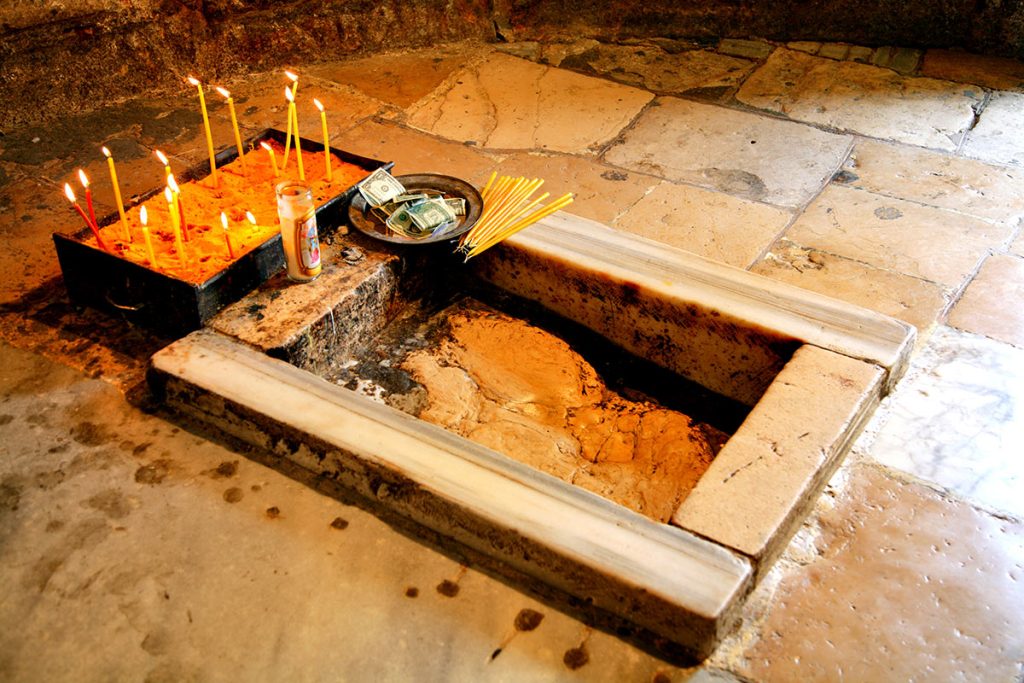
Chapel of the Ascension Origins and Traditions
Shortly after the death and resurrection of Jesus, early Christians began gathering in secret to commemorate His Ascension at a small cave-church on the Mount of Olives. The issuance of the Edict of Milan by the Roman Emperor Constantine I in 313 made it possible for Christians to worship overtly without fear of government persecution.
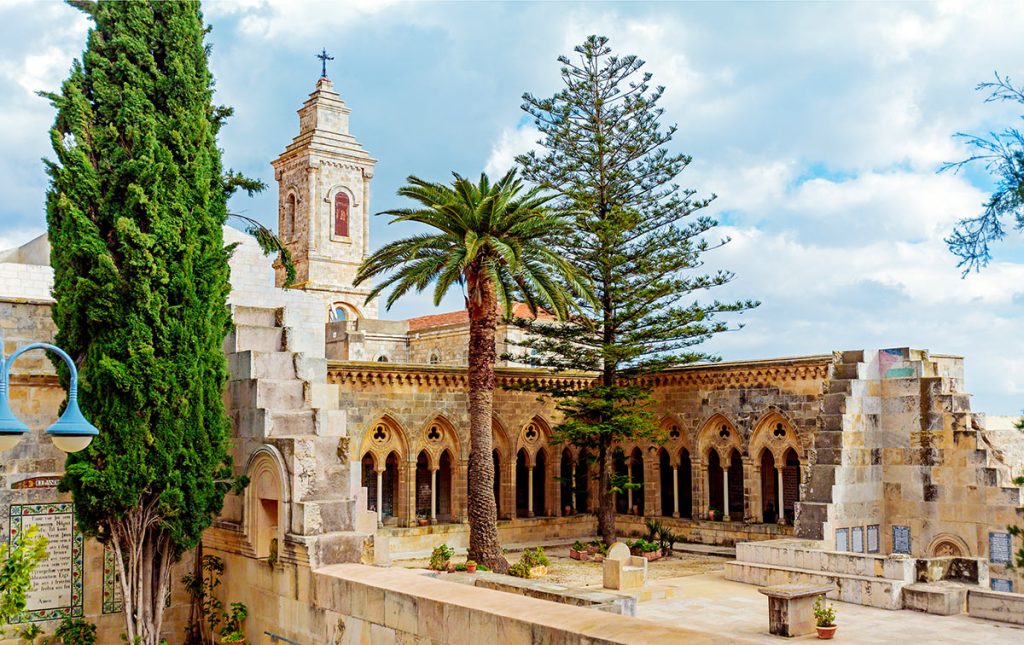
By the time of the pilgrim Egeria’s travels to Jerusalem in 384, the spot of veneration had been moved to the present location, uphill from the cave which had been integrated into the Constantinian Church of Eleona (Paternoster Church), dedicated by then just to Jesus’ teachings about good and evil (Matthew 24:1-26:2). In addition, Egeria witnessed the celebration of the Ascension at an “open hillock” near the cave.
The Ascension of Jesus
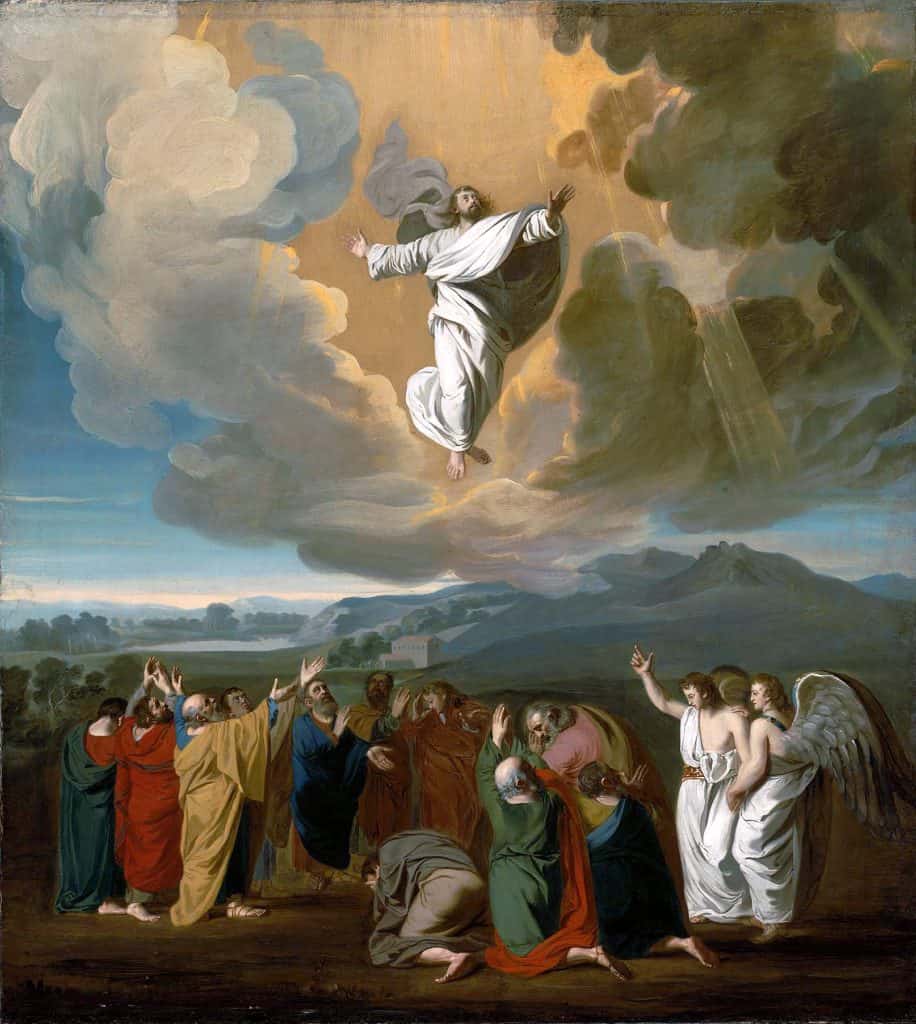
The first church was erected there a few years later, sometime before 392, by a lady from the imperial family, Poimenia. Later a legend attributed the church to Saint Helena, mother of Constantine I. The legend holds that during Saint Helena’s pilgrimage to the Holy Land between 326 and 328; she identified two spots on the Mount of Olives as being associated with Jesus’ life – the place of His Ascension. And a grotto associated with His teaching of the Lord’s Prayer – and that on her return to Rome she ordered the construction of two sanctuaries at these locations.
The Chapel of the Ascension in the 4th Century
The first complex constructed on the site of the present chapel was known as Imbomon (Greek for “on the hill”). It was a rotunda, open to the sky, surrounded by circular porticoes and arches. Sometime between 384–390 CE, Poimenia, a wealthy and pious Roman aristocratic woman of the imperial family financed the building of a Byzantine-style church “around Christ’s last footprints”.
The Imbomon, as well as the nearby Eleona Basilica and other monasteries and churches on the Mount of Olives, were destroyed by the armies of the Persian Shah Khosrau II during the final phase of the Byzantine-Sassanid Wars in 614 CE.
Mount of Olives Tour
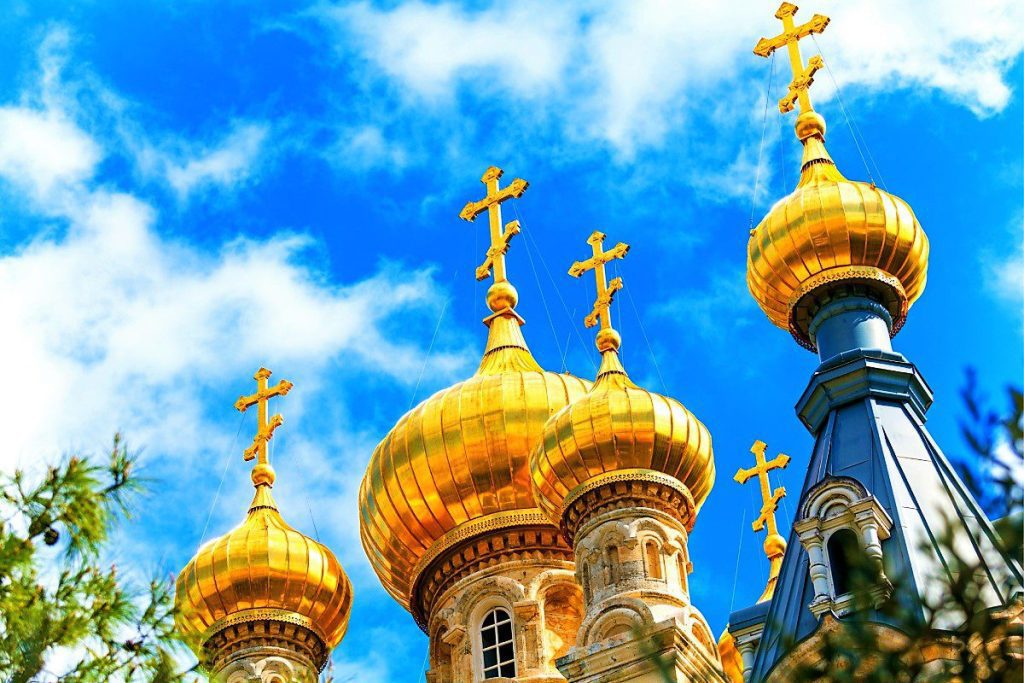
The 7th Century Church of the Ascension
It was subsequently rebuilt in the late 7th century. The Frankish bishop and pilgrim Arculf, in relating his pilgrimage to Jerusalem in about the year 680, described this church as “a round building open to the sky, with three porticoes entered from the south. Eight lamps shone brightly at night through windows facing Jerusalem. Inside was a central Edicule containing the footprints of Christ, plainly and impressed in the dust, inside a railing.”
The reconstructed church was eventually destroyed and rebuilt a second time by the Crusaders in the 12th century. This final church was ultimately destroyed by the armies of Saladin, leaving only a partially intact outer 12m by 12m octagonal wall surrounding an inner 3m by 3m shrine, also octagonal, called a martyrium or Edicule. This structure is still partially altered after Saladin’s 1187 conquest of Jerusalem.
Augusta Victoria Compound
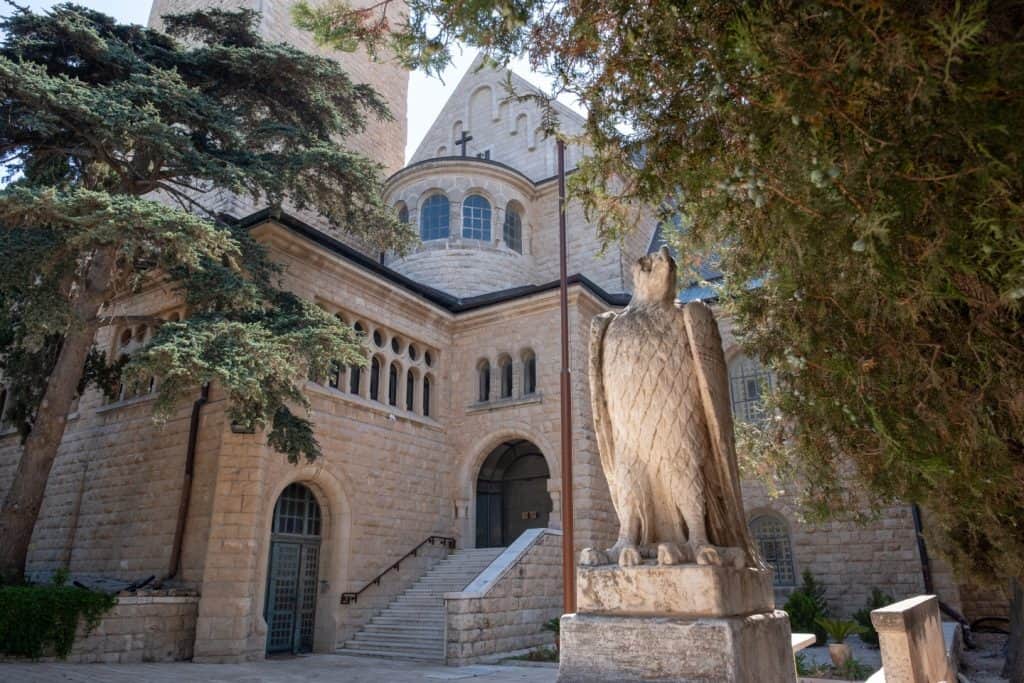
Muslim Changes Since 1187
After the fall of Jerusalem in 1187, the ruined church and monastery were abandoned by the Christians, who resettled in Acre. During this time, Saladin established the Mount of Olives as an Islamic trust (Waqf in Arabic) registered in a document dated 20 October 1188. The chapel was converted to a mosque, and installed a mihrab.
Because the vast majority of pilgrims to the site were Christian, as a gesture of compromise and goodwill, Saladin ordered the construction, two years later, of a second mosque nearby for Muslim worship. At the same time, Christians continued to visit the main chapel. Also, around this time, the complex was fortified with towers and walls and guarded by watchmen.
Mount of Olives Viewpoint
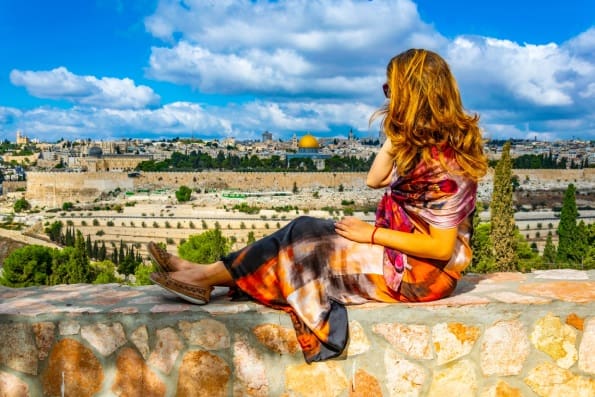
The shrine and surrounding structures saw periods of non-use and disrepair over the next 300 years. By the 15th century, the destroyed eastern section of the octagonal outer wall was separated from the rest by a dividing wall and was occupied by peasant houses and animal stables. Though still under the authority of the Islamic Waqf of Jerusalem, the Edicule-turned-mosque is currently open to visitors of all faiths for a nominal fee.
Things to See in the Church of the Ascension
The Edicule (Chapel): The main structure of the chapel is from the Crusader era; the stone dome and the octagonal drum it stands on are Muslim additions. The exterior walls are decorated with arches and marble columns. The entrance is from the west, and the chapel’s interior consists of a mihrab indicating the direction of Mecca in the south wall. On the floor, inside a stone frame, is a slab of stone called the “Ascension Rock.”
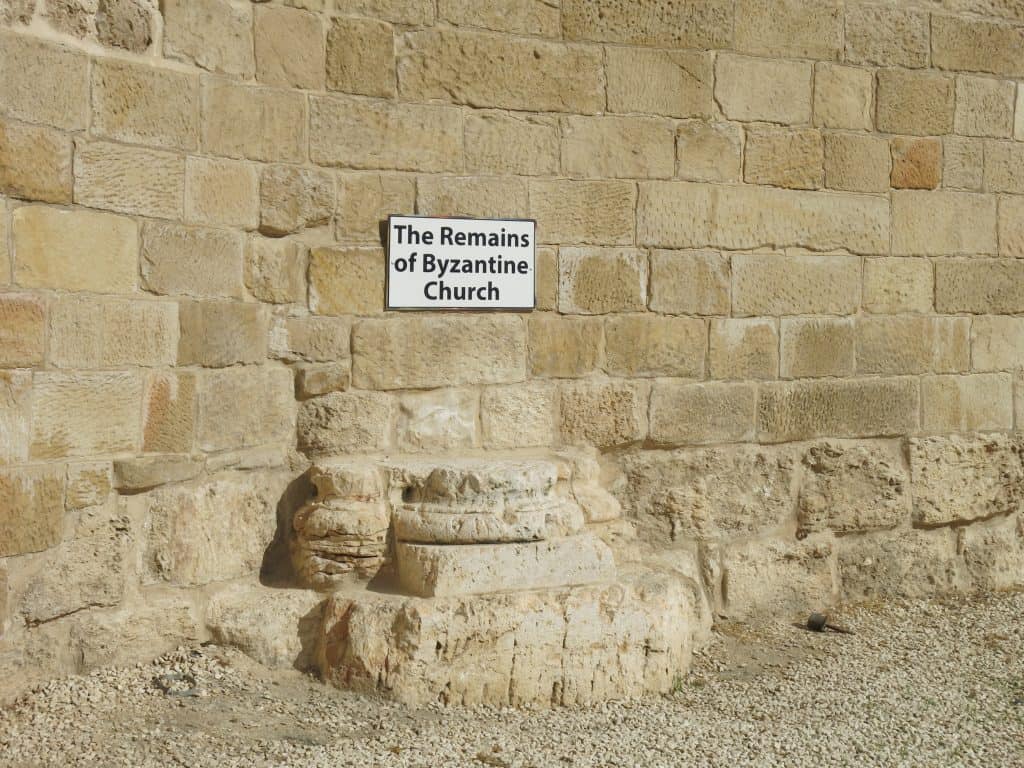
The Ascension Rock: The octagonal ædicule surrounds the Ascension rock, said to contain the right footprint of Christ, the section bearing the left footprint having been taken to the Al-Aqsa Mosque in the Middle Ages. The faithful believe the impression was made as Jesus ascended into Heaven and is revered as the last point on earth touched by the incarnate Christ. Arculf writes about “the footprints of Christ, plainly and impressed in the dust,” which he saw in ca. 680 CE.







